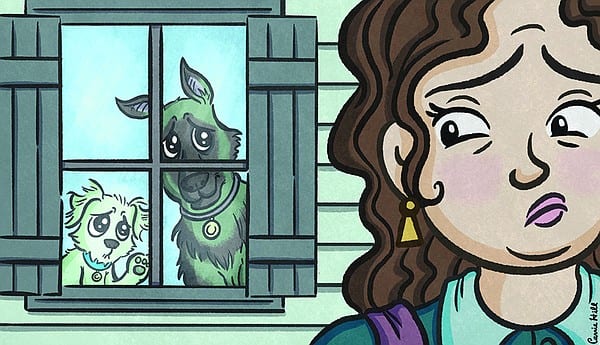ASK THE VET: Prepare dogs now for post-pandemic lifestyle – Arkansas Online
[ad_1]

Q I have been working at home during the pandemic, and I expect to return to my regular workplace soon. My two dogs have become accustomed to having me home, and I’m concerned that their stress will increase when I’m again away 40 hours every week. What can I do to make the transition easier for them?
A Your concern for your dogs’ emotional health is compassionate. Fortunately, you can do several things now to lessen their stress when you return to your regular office.
Start by maintaining a consistent routine. Get up and go to bed on the same schedule you’ll use when you return to the office. Feed and walk your dogs at the same times you’ll feed and walk them when you’re away all day at work.
Gradually increase your time away from home. Leave for an hour or two each day, even if you have to sit in your car and read or take a walk by yourself in the park.
Make your departures and returns quiet and uneventful. If your dogs are anxious, practice calm departures several times a day.
When it’s time to return to the office, begin with a couple of half-days each week, and then gradually increase your hours and days at work. If you’re anxious, do your best not to share your stress with your four-legged family members.
Provide mental stimulation for your dogs when they’re home alone. Rotate their toys. Play music or, better yet, a video or television show designed for dogs.
For the first month or two, use Adaptil collars or plug-in diffusers. They release a pheromone that helps dogs feel relaxed and safe.
If you adopted your dogs during the pandemic, enroll them in a group obedience training class to increase their self-confidence and accustom them to new people, dogs and circumstances.
Q My cat Mocha has tiny black bumps on her chin, which she scratches. The itchy black bumps, which look like blackheads, recur every summer. What should I do about them?
A It sounds like Mocha may have feline chin acne and should see her veterinarian.
Chin acne occurs when hair follicles become blocked. The result is comedones (KOE’-mee-dones), blackheads that develop on the chin and skin around the lips. If the disease worsens, the comedones become infected.
In cats, acne is not associated with adolescence, as it often is in humans and dogs, but occurs in adults.
The cause is unknown, though many conditions are thought to play a role. These include environmental and food allergies, respiratory viruses, ringworm infection and excessive production of oily sebum by the sebaceous glands. Multiple cats in a single home can be affected, which raises the possibility of inheritance or an environmental trigger.
Feline chin acne is a chronic disease. To minimize recurrences, keep Mocha’s face and chin clean. Use metal or glass food and water bowls, because plastic is porous and can retain bacteria.
Treatment could include a topical antiseptic, antiseborrheic, antibiotic, anti-fungal or anti-inflammatory. Oral or injectable medication could also be needed.
Most cats with chin acne respond well to treatment, so get started by taking Mocha to her veterinarian.
Lee Pickett, VMD, practices companion animal medicine in North Carolina. Contact her at
Let’s block ads! (Why?)
[ad_2]

